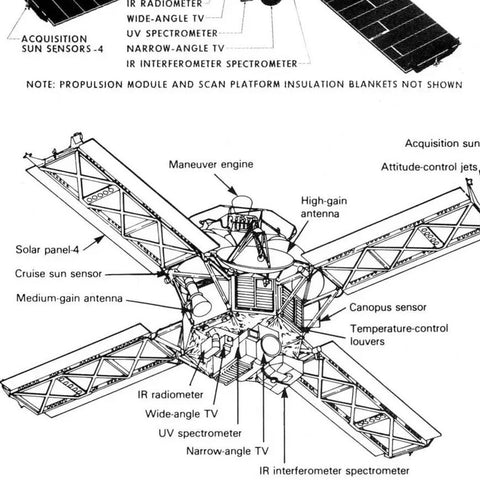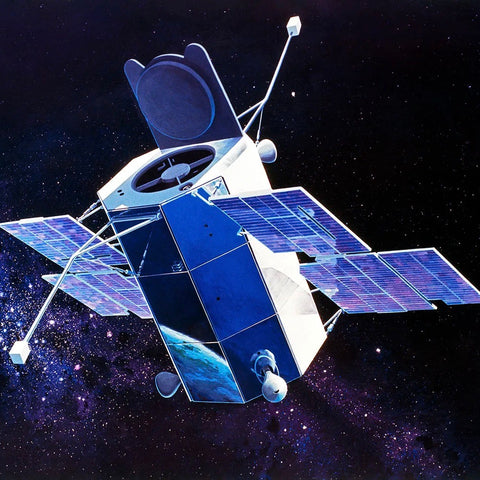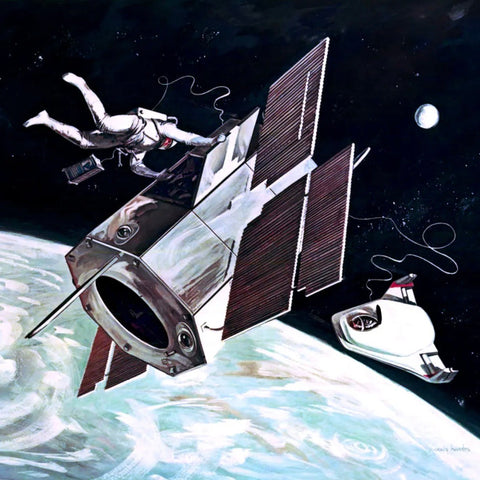In the realm of space exploration, each mission is equipped with an array of scientific instruments designed to unlock the mysteries of our celestial neighbors. Among these missions, Mariner 9 stands out as a pioneering venture that revolutionized our understanding of Mars. Launched by NASA on May 30, 1971, Mariner 9 became the first spacecraft to orbit another planet, providing unprecedented insights into the Martian landscape. At the heart of Mariner 9's success were its sophisticated scientific instruments, meticulously crafted to unravel the secrets of the Red Planet. Let's delve into the remarkable tools that enabled Mariner 9's groundbreaking discoveries.
Imaging System of Mariner 9: Capturing Martian Landscapes
Mariner 9 was equipped with a cutting-edge imaging system comprising two television cameras capable of capturing high-resolution images of Mars' surface. These cameras, mounted on a scan platform, allowed Mariner 9 to survey vast regions of the Martian landscape with unparalleled clarity. By mapping surface features such as craters, valleys, and polar ice caps, the imaging system provided crucial insights into Mars' geological history and atmospheric dynamics.
Infrared Spectrometer: Unraveling Martian Composition
Another essential instrument aboard Mariner 9 was the infrared spectrometer, tasked with analyzing the composition of Mars' atmosphere and surface materials. By measuring the infrared radiation emitted by various compounds, the spectrometer identified key elements such as water vapor, carbon dioxide, and dust particles in the Martian atmosphere. These findings shed light on Mars' climate patterns, atmospheric chemistry, and the potential for past or present water-related processes on the planet's surface.
Ultraviolet Spectrometer: Probing Atmospheric Dynamics
Complementing the infrared spectrometer was Mariner 9's ultraviolet spectrometer, designed to study the composition and behavior of Mars' upper atmosphere. This instrument measured the absorption and emission of ultraviolet radiation, providing valuable data on the distribution of gases such as ozone and nitrogen dioxide. By monitoring atmospheric density and temperature variations, the ultraviolet spectrometer contributed to our understanding of Mars' atmospheric dynamics and its interactions with solar radiation and space weather.
Magnetometer: Mapping Mars' Magnetic Field
Mariner 9 also carried a magnetometer, a device crucial for mapping the magnetic field of Mars. This instrument detected and measured the strength and direction of magnetic fields in various regions of the planet, revealing the presence of localized magnetic anomalies. These observations helped scientists decipher Mars' internal structure and geological evolution, offering clues about its magnetic history and potential implications for the planet's habitability.
The scientific instruments aboard Mariner 9 represented the pinnacle of technological innovation, paving the way for unprecedented discoveries about Mars' geology, atmosphere, and magnetic environment. Through meticulous observation and analysis, these instruments provided a comprehensive portrait of the Red Planet, shaping our understanding of its past, present, and future. As we continue to explore the mysteries of our solar system, the legacy of Mariner 9 serves as a testament to the power of scientific curiosity and human ingenuity in unraveling the secrets of the cosmos.






